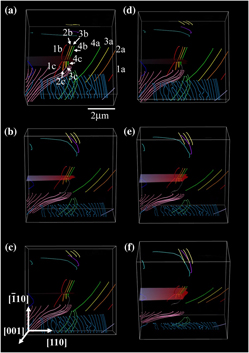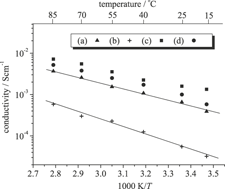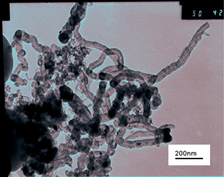Refine search
Actions for selected content:
106095 results in Materials Science
Meet Our Authors
-
- Journal:
- MRS Bulletin / Volume 36 / Issue 3 / March 2011
- Published online by Cambridge University Press:
- 22 March 2011, pp. 175-177
- Print publication:
- March 2011
-
- Article
-
- You have access
- HTML
- Export citation
Bio Focus: Hydrogen-bonded shell enhances cell survivability
-
- Journal:
- MRS Bulletin / Volume 36 / Issue 3 / March 2011
- Published online by Cambridge University Press:
- 22 March 2011, p. 156
- Print publication:
- March 2011
-
- Article
-
- You have access
- HTML
- Export citation
Sequential multiplication of dislocation sources along a crack front revealed by high-voltage electron microscopy and tomography
-
- Journal:
- Journal of Materials Research / Volume 26 / Issue 4 / 28 February 2011
- Published online by Cambridge University Press:
- 11 March 2011, pp. 508-513
- Print publication:
- 28 February 2011
-
- Article
- Export citation
JMR volume 26 issue 4 Cover and Back matter
-
- Journal:
- Journal of Materials Research / Volume 26 / Issue 4 / 28 February 2011
- Published online by Cambridge University Press:
- 11 March 2011, pp. b1-b6
- Print publication:
- 28 February 2011
-
- Article
-
- You have access
- Export citation
Spinning yarn from long carbon nanotube arrays
-
- Journal:
- Journal of Materials Research / Volume 26 / Issue 5 / 14 March 2011
- Published online by Cambridge University Press:
- 28 February 2011, pp. 645-651
- Print publication:
- 14 March 2011
-
- Article
- Export citation
Structure manufacturing of proton-conducting organic–inorganic hybrid silicophosphite membranes by solventless synthesis
-
- Journal:
- Journal of Materials Research / Volume 26 / Issue 6 / 28 March 2011
- Published online by Cambridge University Press:
- 28 February 2011, pp. 796-803
- Print publication:
- 28 March 2011
-
- Article
- Export citation
Hydrothermal BaTiO3 thin films from nanostructured Ti templates
-
- Journal:
- Journal of Materials Research / Volume 26 / Issue 4 / 28 February 2011
- Published online by Cambridge University Press:
- 02 March 2011, pp. 592-599
- Print publication:
- 28 February 2011
-
- Article
- Export citation
Epitaxial growth of Mn-doped γ-Ga2O3 on spinel substrate
-
- Journal:
- Journal of Materials Research / Volume 26 / Issue 4 / 28 February 2011
- Published online by Cambridge University Press:
- 28 February 2011, pp. 578-583
- Print publication:
- 28 February 2011
-
- Article
- Export citation
Three-dimensional visualization of dislocation-precipitate interactions in a Al–4Mg–0.3Sc alloy using weak-beam dark-field electron tomography
-
- Journal:
- Journal of Materials Research / Volume 26 / Issue 4 / 28 February 2011
- Published online by Cambridge University Press:
- 01 March 2011, pp. 514-522
- Print publication:
- 28 February 2011
-
- Article
- Export citation
Reductive/expansion synthesis of zero valent submicron and nanometal particles
-
- Journal:
- Journal of Materials Research / Volume 26 / Issue 5 / 14 March 2011
- Published online by Cambridge University Press:
- 28 February 2011, pp. 672-681
- Print publication:
- 14 March 2011
-
- Article
- Export citation
JMR volume 26 issue 4 Cover and Front matter
-
- Journal:
- Journal of Materials Research / Volume 26 / Issue 4 / 28 February 2011
- Published online by Cambridge University Press:
- 11 March 2011, pp. f1-f5
- Print publication:
- 28 February 2011
-
- Article
-
- You have access
- Export citation
Continuous synthesis of multiwalled carbon nanotubes from xylene using the swirled floating catalyst chemical vapor deposition technique
-
- Journal:
- Journal of Materials Research / Volume 26 / Issue 5 / 14 March 2011
- Published online by Cambridge University Press:
- 28 February 2011, pp. 640-644
- Print publication:
- 14 March 2011
-
- Article
- Export citation
Role of annealing conditions on the ferromagnetic and dielectric properties of La2NiMnO6
-
- Journal:
- Journal of Materials Research / Volume 26 / Issue 4 / 28 February 2011
- Published online by Cambridge University Press:
- 28 February 2011, pp. 567-577
- Print publication:
- 28 February 2011
-
- Article
- Export citation
4 - Radio-frequency sheaths
-
- Book:
- Physics of Radio-Frequency Plasmas
- Published online:
- 04 April 2011
- Print publication:
- 24 February 2011, pp 96-130
-
- Chapter
- Export citation
Acknowledgements
-
- Book:
- Physics of Radio-Frequency Plasmas
- Published online:
- 04 April 2011
- Print publication:
- 24 February 2011, pp vii-viii
-
- Chapter
- Export citation
3 - Bounded plasma
-
- Book:
- Physics of Radio-Frequency Plasmas
- Published online:
- 04 April 2011
- Print publication:
- 24 February 2011, pp 59-95
-
- Chapter
- Export citation
Frontmatter
-
- Book:
- Physics of Radio-Frequency Plasmas
- Published online:
- 04 April 2011
- Print publication:
- 24 February 2011, pp i-iv
-
- Chapter
- Export citation
Contents
-
- Book:
- Physics of Radio-Frequency Plasmas
- Published online:
- 04 April 2011
- Print publication:
- 24 February 2011, pp v-vi
-
- Chapter
- Export citation
Appendix: Solutions to exercises
-
- Book:
- Physics of Radio-Frequency Plasmas
- Published online:
- 04 April 2011
- Print publication:
- 24 February 2011, pp 368-374
-
- Chapter
- Export citation
Index
-
- Book:
- Physics of Radio-Frequency Plasmas
- Published online:
- 04 April 2011
- Print publication:
- 24 February 2011, pp 383-385
-
- Chapter
- Export citation









